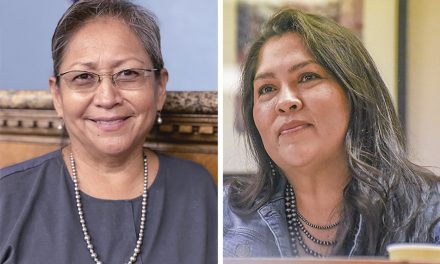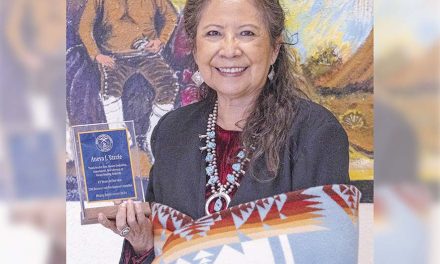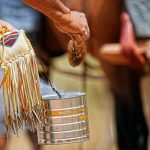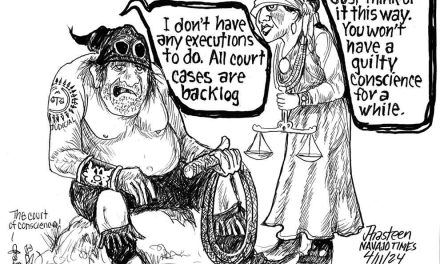
50 Years Ago: Nakai – Without chairman veto power, there is no checks and balances
As 1966 began, the leader of the Navajo Tribe, Raymond Nakai, made headlines in both the Navajo Times and the Gallup Independent by using the “C” word.
Nakai was in Many Farms to announce that he was running for re-election and was planning to do it on a platform of advocating that the tribe draw up a constitution.
More than 500 tribal members showed up for Nakai’s opening rally and many were probably shocked at first to hear him advocate for a constitution.
A little Navajo history lesson is needed here.
Back in the 1930s, the federal government, in an effort to control overgrazing on the reservation, approved a stock reduction program that saw tens of thousands of Navajo sheep picked up and slaughtered, often in front of their owner’s eyes.
To say that the program was unpopular among Navajo ranchers is a severe understatement. It led to death threats against some BIA personnel and even for some tribal leaders who were thought to support the program.
About this same time, there was a movement afoot to enact a tribal constitution but the effort failed because many Navajo ranchers thought that approving a constitution would somehow give the BIA more control over their land and livestock.
So when Nakai came out and said he not only supported the idea but planned to get one enacted if he was elected, there were still a lot of people around who remembered vividly the livestock reduction program and the debate over the tribal constitution program from some 30 years before.
But Nakai put a different spin on it. A constitution, he said, would “return the government of the Navajo Tribe to its people.”
When his supporters had time to think about it, they began to realize that Nakai wanted to use the constitution to gain more control over the Navajo Tribal Council and limit the power of those on the council who had spent the last three years undermining his program.
The key element of this constitution proposal, he said, was the granting of veto power to the tribe’s chairman over legislation approved by the council. Other leaders, such as the U.S. president and state governors, had this authority and Nakai said he didn’t understand why the leader of the nation’s largest Indian tribe didn’t have it.
“Without veto power,” he said, “there is no system of checks and balances in the tribal government.”
(There was no system in place at that time that allowed tribal members to hold a referendum on this issue. To get the veto power, Nakai needed the council to approve it – which he knew would never happen or put a constitution in place that would grant the tribal chairman this power.)
Nakai quoted New Mexico’s senior senator, Clinton P. Anderson, who once said that Indians living on their reservation had more constitution rights when they off the reservation than they did when they were on the reservation.
Nakai said it was time for the Navajo Tribe to hold a Navajo constitution convention to draft a tribal constitution that would be presented to the Navajo people for a vote.
A little historical note: when Nakai was eventually elected to a second term, the idea of a constitution didn’t last very long, in part because so many of the members of the Old Guard who opposed Nakai were not re-elected and Nakai found himself with so much power that he no longer felt there was a need for a tribal constitution.
Since then, the idea of a tribal constitution comes up once every decade or so but in the end, it doesn’t seem to go anywhere.
The first week of 1966 also marked the beginning of a series of meetings by New Mexico health officials to try and get ahead of the bubonic plague this time around.
Neither the state nor the federal government was prepared in the summer of 1965 when a bubonic plague epidemic occurred in parts of McKinley County and the Navajo Reservation.
Five people were infected during the summer of 1965 by fleas infesting prairie dogs, which lead to a major effort by the New Mexico state government from August to October of 1965 to eradicate the fleas.
The project wasn’t successful but health officials said they now had time to regroup as reservation prairie dogs hibernated.
Bryan Miller, a director of the program that was in charge in 1965 of trying to eradicate the fleas, said this year they were going to get a head start by having teams in place in April to go out and survey the prairie dog population.
They planned to live-trap as many prairie dogs as possible and take blood samples, which will be tested for plague antibodies. Fleas would also be collected from both the prairie dogs and the soil and tested, he said.
This time, he promised, health officials would be ready.
To read the full article, pick up your copy of the Navajo Times at your nearest newsstand Thursday mornings!
Are you a digital subscriber? Read the most recent three weeks of stories by logging in to your online account.







 Highway 264,
Highway 264, I-40, WB @ Winslow
I-40, WB @ Winslow